Somewhere off the coast of São Miguel, you spot a silver spray on the horizon. A plume of vapor against the sky, and then the broad arc of a back, gliding and gone. You’ve found a whale—or rather, it has allowed itself to be seen.
Whale and dolphin watching in the Azores isn’t just an excursion. It’s a slow-motion revelation. Three hours on the open Atlantic, chasing the promise of something wild. You don’t always get a breach, a leap, a cinematic tail slap. More often, you get something quieter: a dorsal fin, the glint of movement, a synchronized exhale. And that’s more than enough.
When you step aboard one of the boats that departs from the island’s southern harbors, you don’t just leave land—you enter another world. This is not a zoo. This is the open Atlantic, and you are here only briefly, a visitor in someone else’s realm.
Two ways to go to sea
We went to sea on this specific tour operated by Futurismo, a provider we recommend for their extensive experience and ethical precautions.
Futurismo offers two main formats. The first is by catamaran: bigger, slower, steadier. It’s ideal for those who prefer comfort or suffer from seasickness. You’re more removed from the waterline, so sightings can feel a little distant—but it’s a gentler ride, often with more onboard amenities.
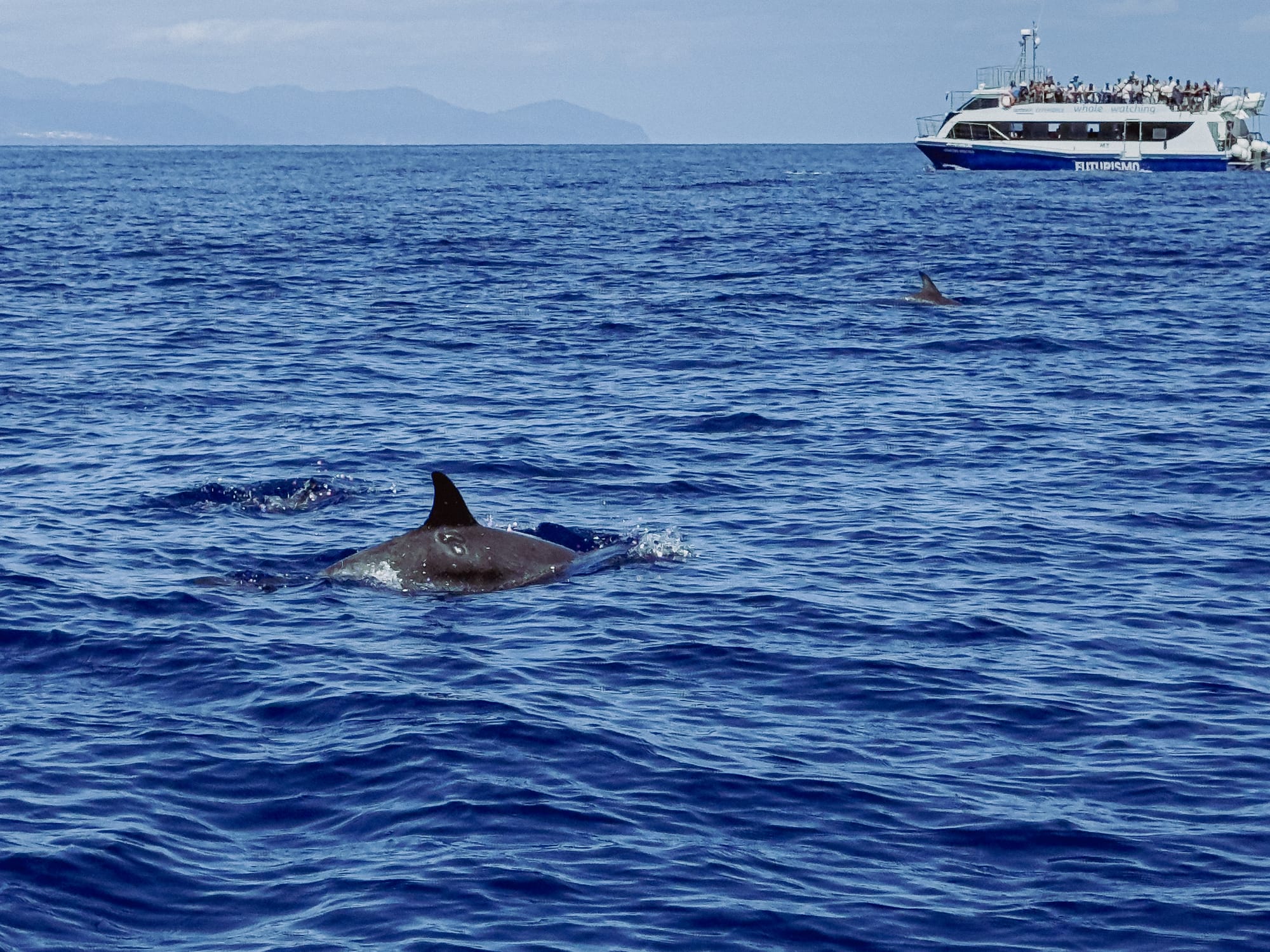
The second is the Zodiac boat. These are small, fast, inflatable crafts that can cover more water and maneuver closer (within regulation distances) to the animals. They’re also bouncier. You’ll need to hold tight, brace your knees, and dress for spray. For those up to it, the Zodiac is more immersive and adrenaline-rich—but it’s not recommended for anyone with mobility issues, back problems, or sensitivity to motion.
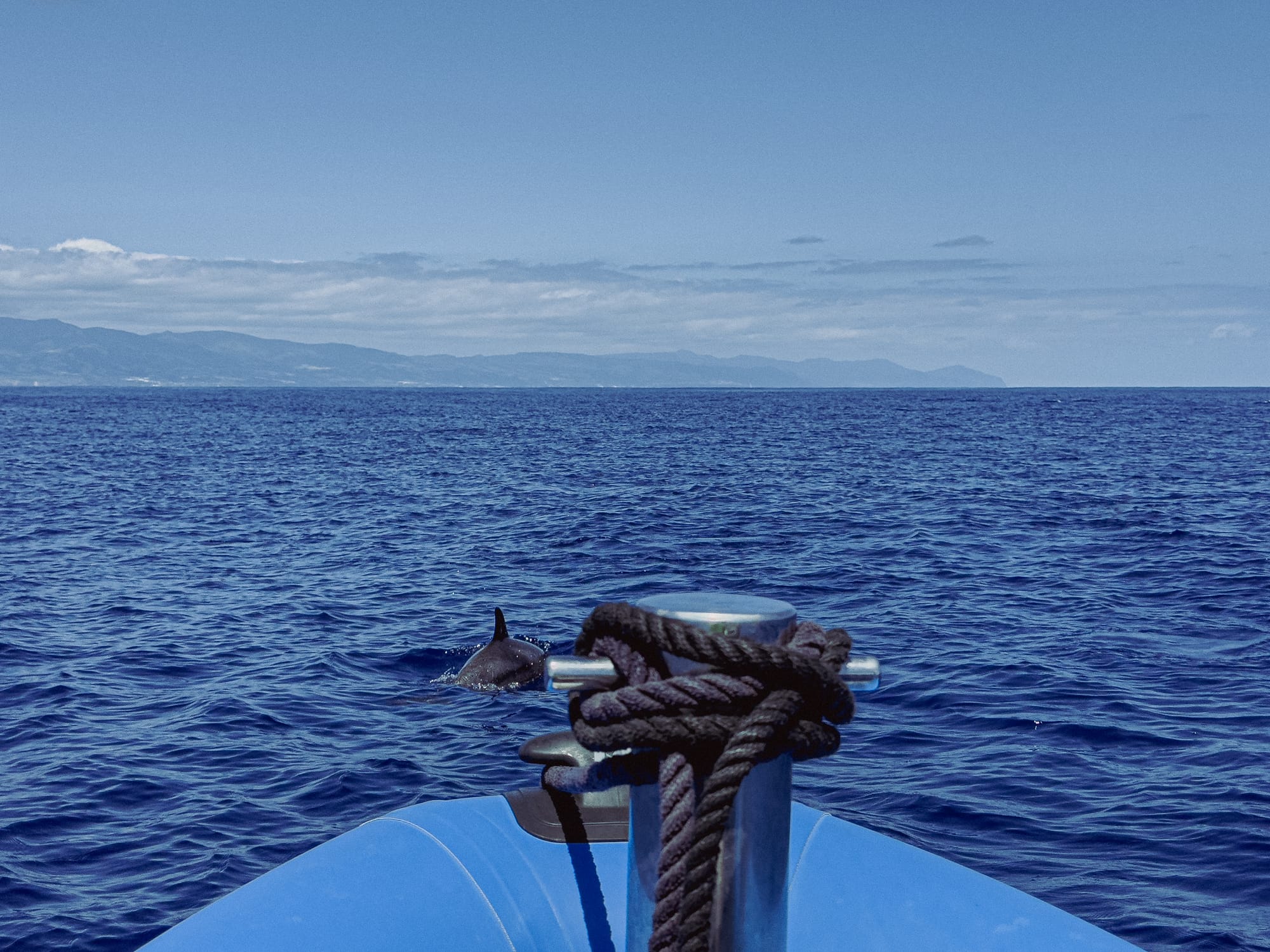
We chose the Zodiac, and it felt like a ride on the edge of the world.
What it’s like
Each outing begins with a briefing at the harbor, usually with a marine biologist onboard. You’ll learn about the local species, what to watch for, and how to behave once wildlife is near. There’s a strong emphasis on observation over interference.
As you head out, you’ll be joined by land-based spotters, high on cliffs, scanning the sea through binoculars. They relay sightings to the boat team, guiding you to where the action might be. It’s a beautiful, collaborative choreography—one eye on the water, one on the sky.
Once a whale or dolphin is located, your boat slows, approaching at an angle and a respectful distance. Engines go quiet. Conversations pause. And you wait.
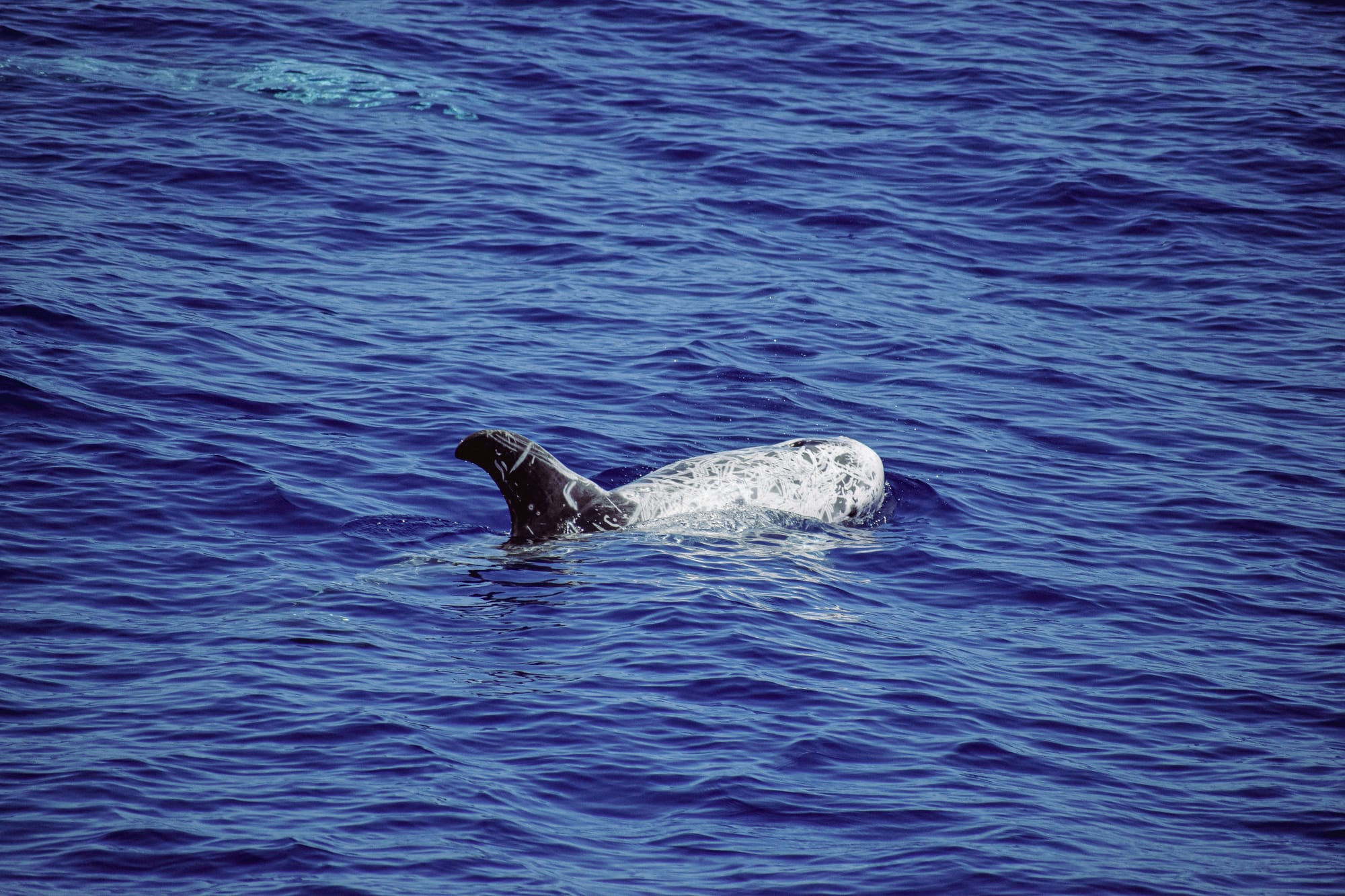
Most of the time, it’s dolphins who arrive first.
The real stars: dolphins
On our trip, we were fortunate. Just twenty minutes out, the guide pointed—a sleek dorsal fin slicing through the water. A pair of dolphins. Then another. Then five more. Within moments we were surrounded. They swam alongside the boat, leaping, twisting in air, then disappearing under the bow, only to resurface meters ahead. Their presence was immediate and electrifying.
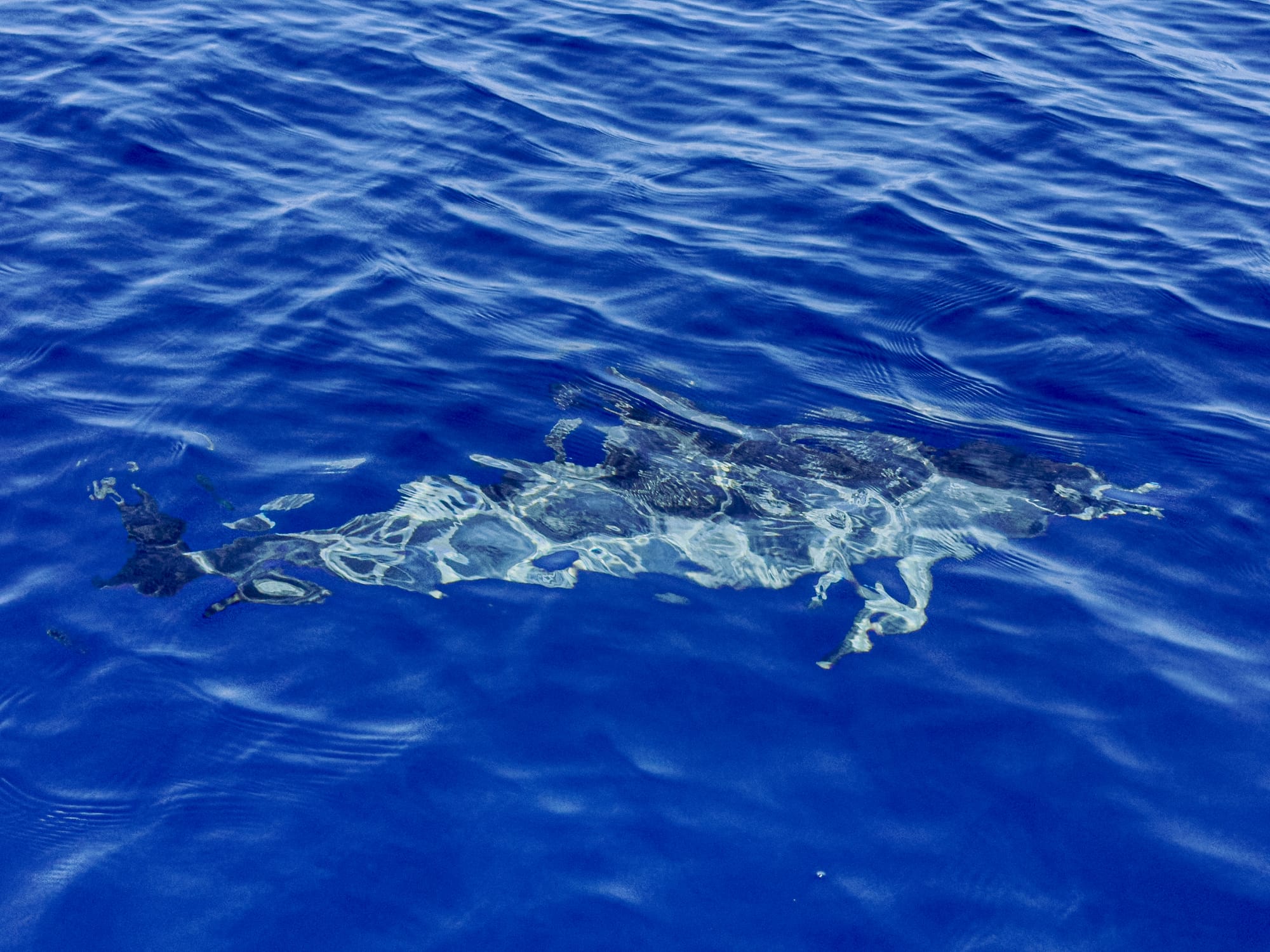
Dolphins, you’ll quickly learn, are the Azores’ true showstoppers. On most outings, you’ll encounter one or several pods.
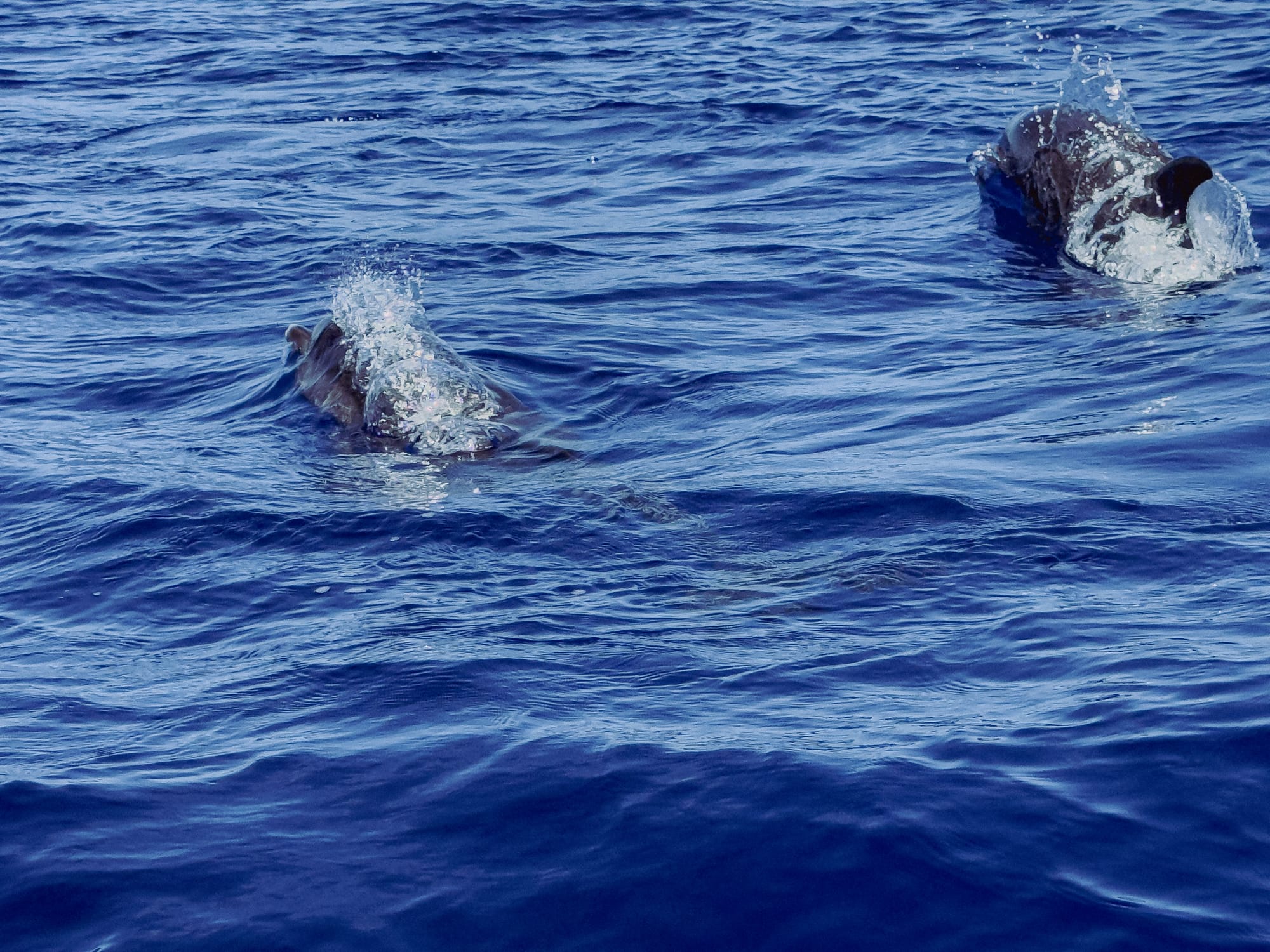
Sometimes they’re cruising lazily; sometimes they’re racing alongside the boat, riding the wake, darting and spinning with the pure thrill of being alive.
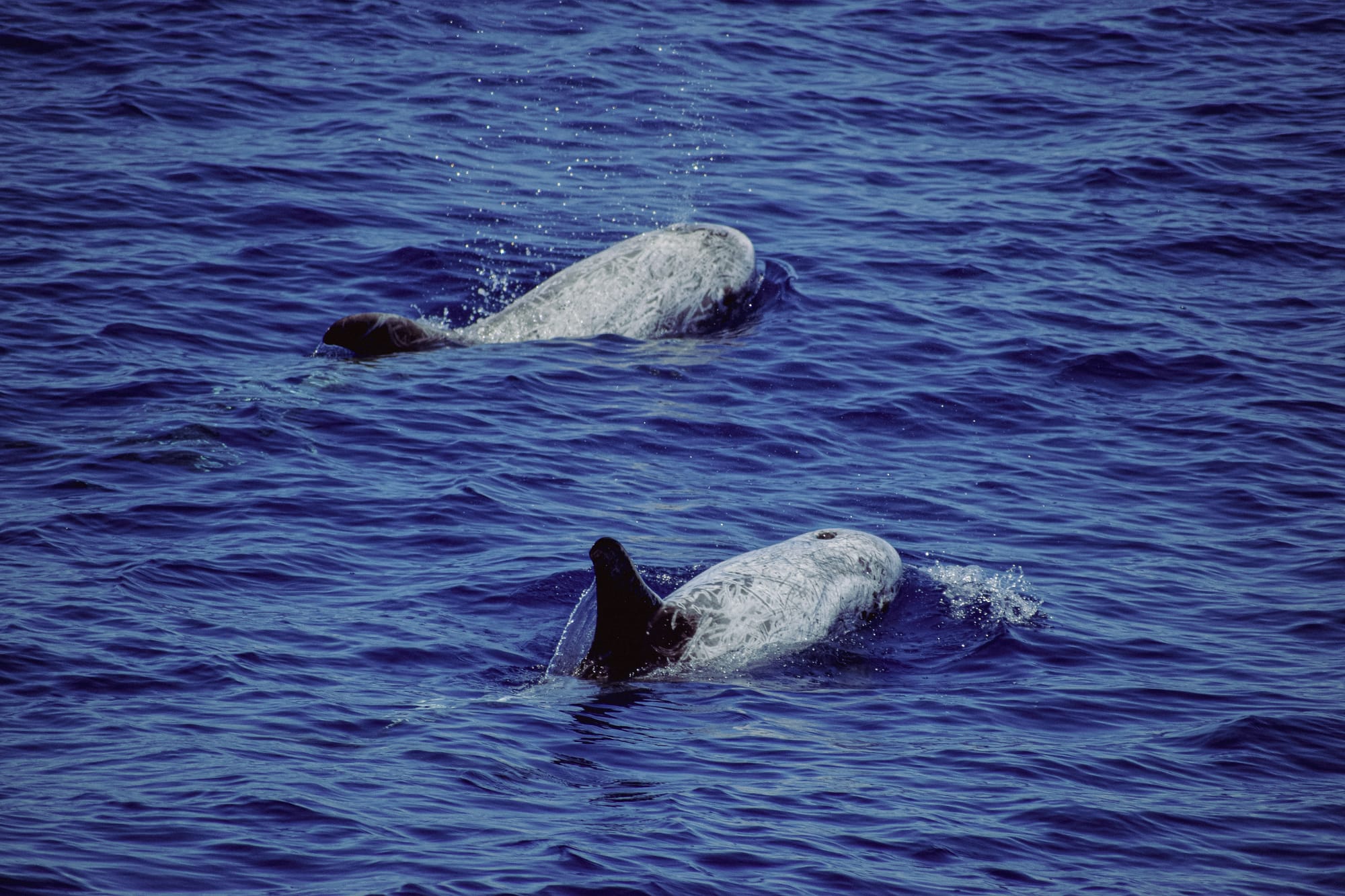
There’s an intimacy to seeing dolphins up close. You can hear their breath. Watch their skin shimmer. Occasionally, they look right at you. In those moments, the line between observer and observed dissolves.
Whale sightings
Whales are a different energy. Quieter. Slower. More elusive.
The sperm whale is the most frequently spotted species year-round. You’ll know you’ve found one when you see the vertical spray, a ridged back, and then, maybe, if you’re lucky, a fluke raised in the air before a deep dive.
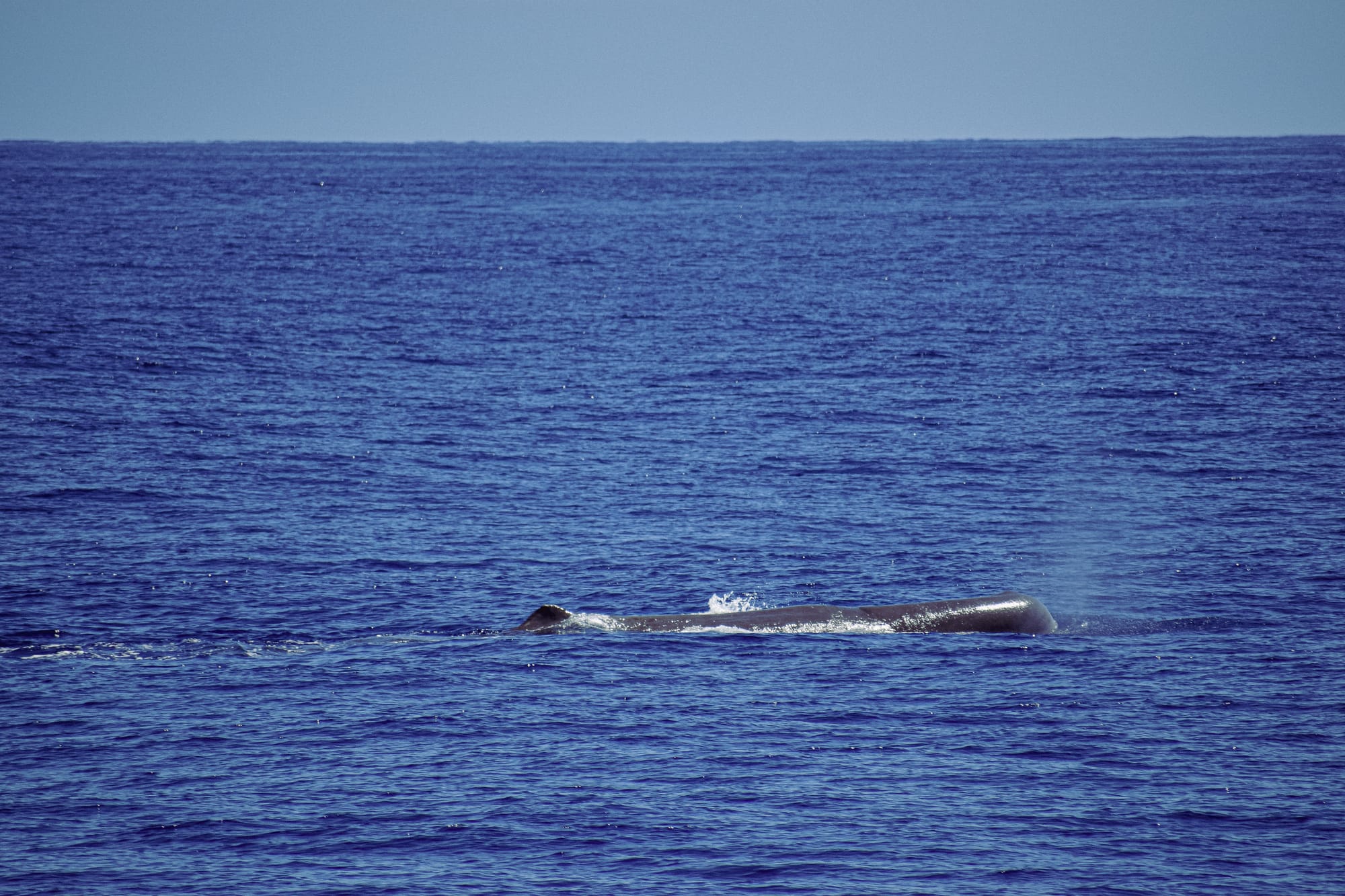
Don’t expect breaches. Despite what tour ads suggest, most sightings are partial. You’ll see the water spout, the back cresting, the tail rising. Sometimes a calf surfaces nearby. And then they vanish again, into blue.
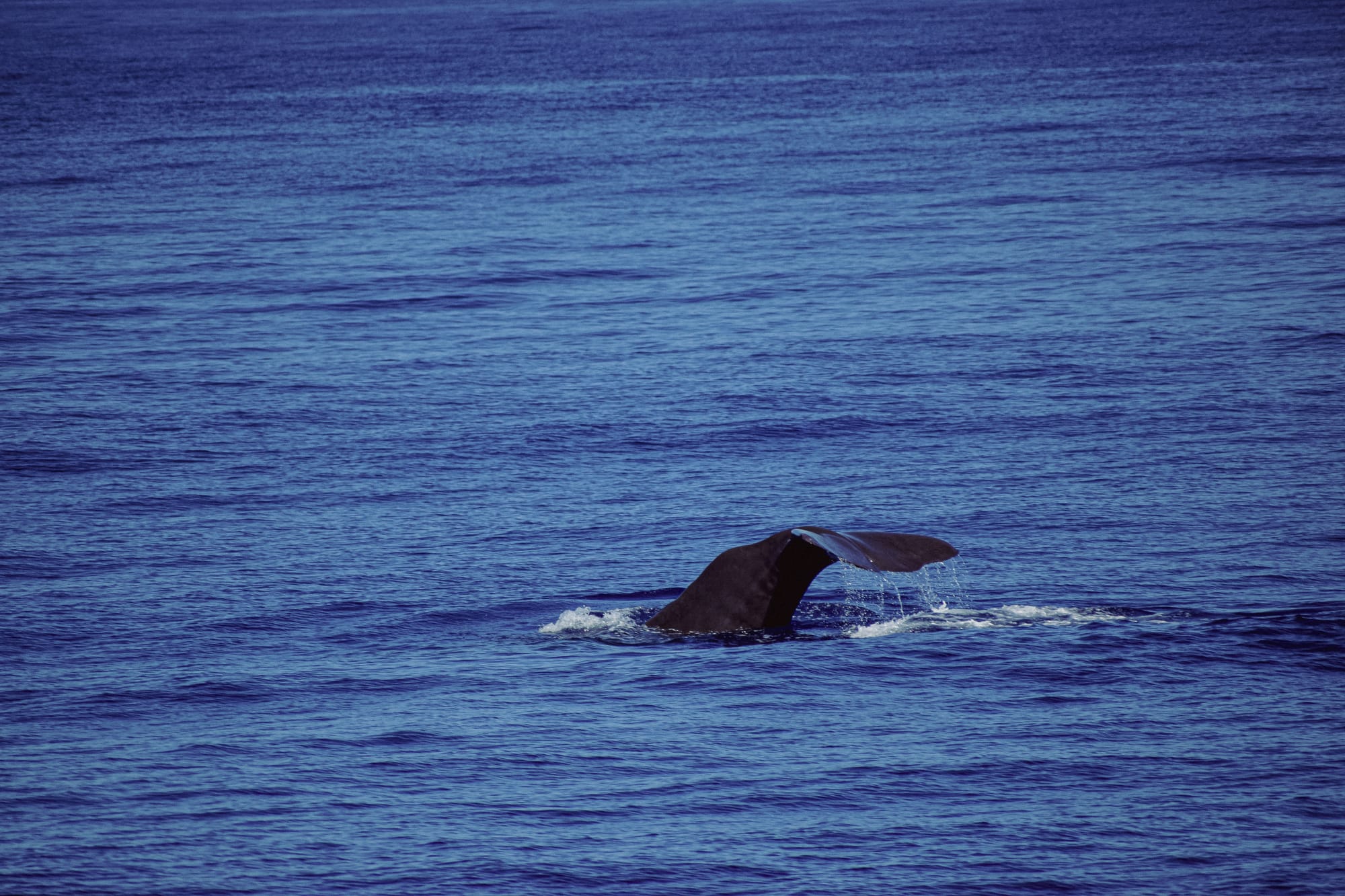
Other whale species—blue whales, fin whales, sei whales—are migratory and seasonal. You might catch them during spring and early summer, especially on longer or more specialized tours.
Other marine life to watch for
It’s not just whales and dolphins. The Azores are alive with marine biodiversity. Here’s what else you might see:
- Common dolphins: Fast, social, often in large pods. Sleek, golden-sided.
- Bottlenose dolphins: Bigger and more familiar to most people—curious and intelligent.
- Risso’s dolphins: Pale, scarred, and striking. These are deep divers and less predictable.
- Pilot whales: Technically a dolphin species, these look like small, dark whales with bulbous heads. Often seen in family groups.
- Sea turtles: Especially loggerhead turtles, floating at the surface or paddling slowly past.
- Seabirds: Cory’s shearwaters, terns, petrels, and gulls are always around. Look for them diving, circling, or hovering over feeding zones.
On some outings, you might also glimpse flying fish, Portuguese man o’ war, or even the shadow of a sunfish beneath the surface.
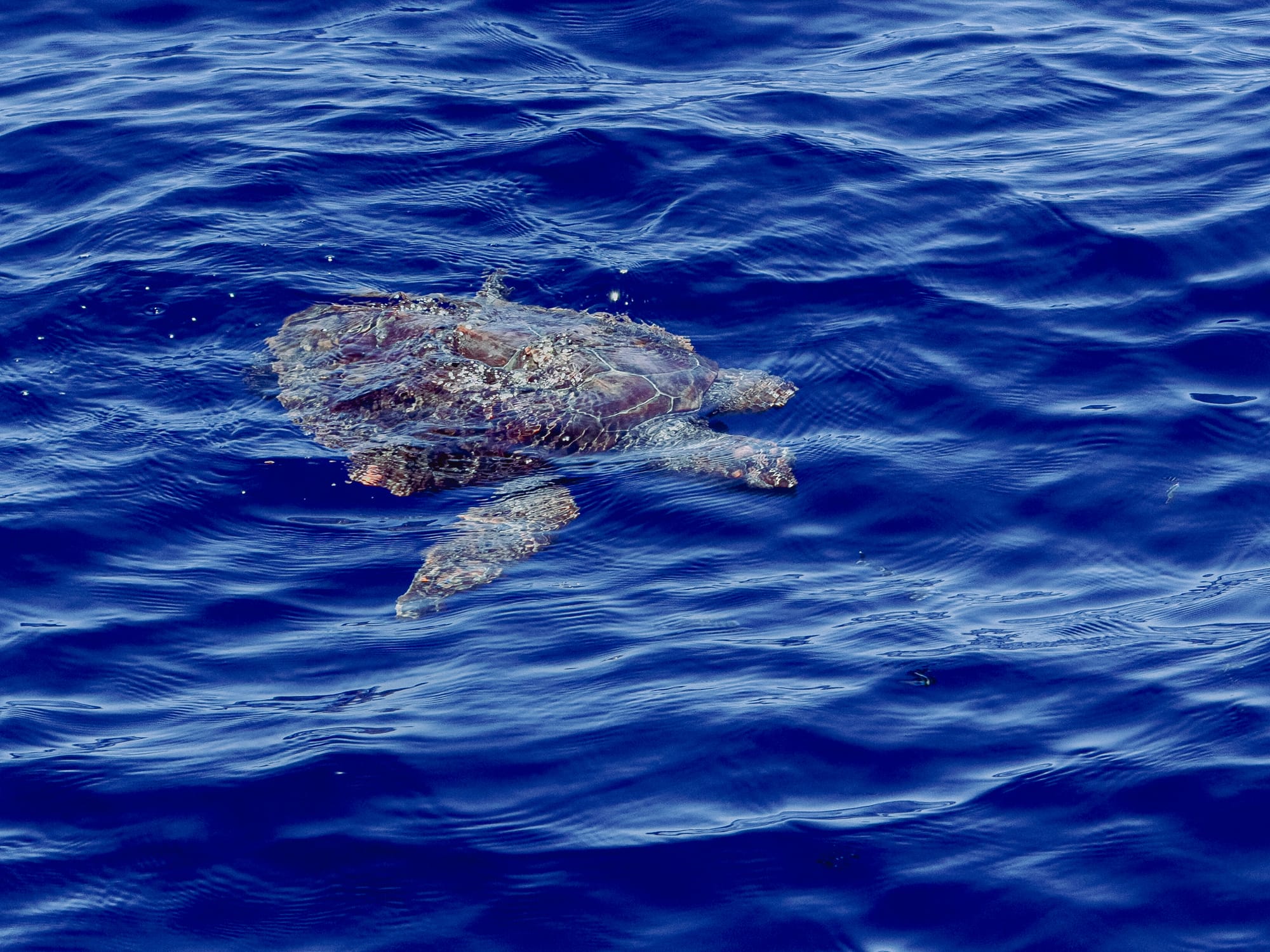
Even among these, it was the dolphins who stayed with us the longest. We saw pods of dozens. They crisscrossed the bow, rode the wake, surfaced together in choreographed exhalations.
Moby Dick moments
There’s something about being on a fast boat in the open Atlantic that stirs something archetypal. It’s hard not to think of Melville’s sailors, endlessly scanning the horizon. Even if the whales you spot don’t leap into the air, even if you only see a sliver of their back and the white spray of breath, it’s thrilling. More so, maybe, because it isn’t staged.
The anticipation becomes its own kind of wonder. You start to look differently—squinting at every disturbance in the water, every ripple or shift in color. Time stretches. The movement of the ocean becomes a language.
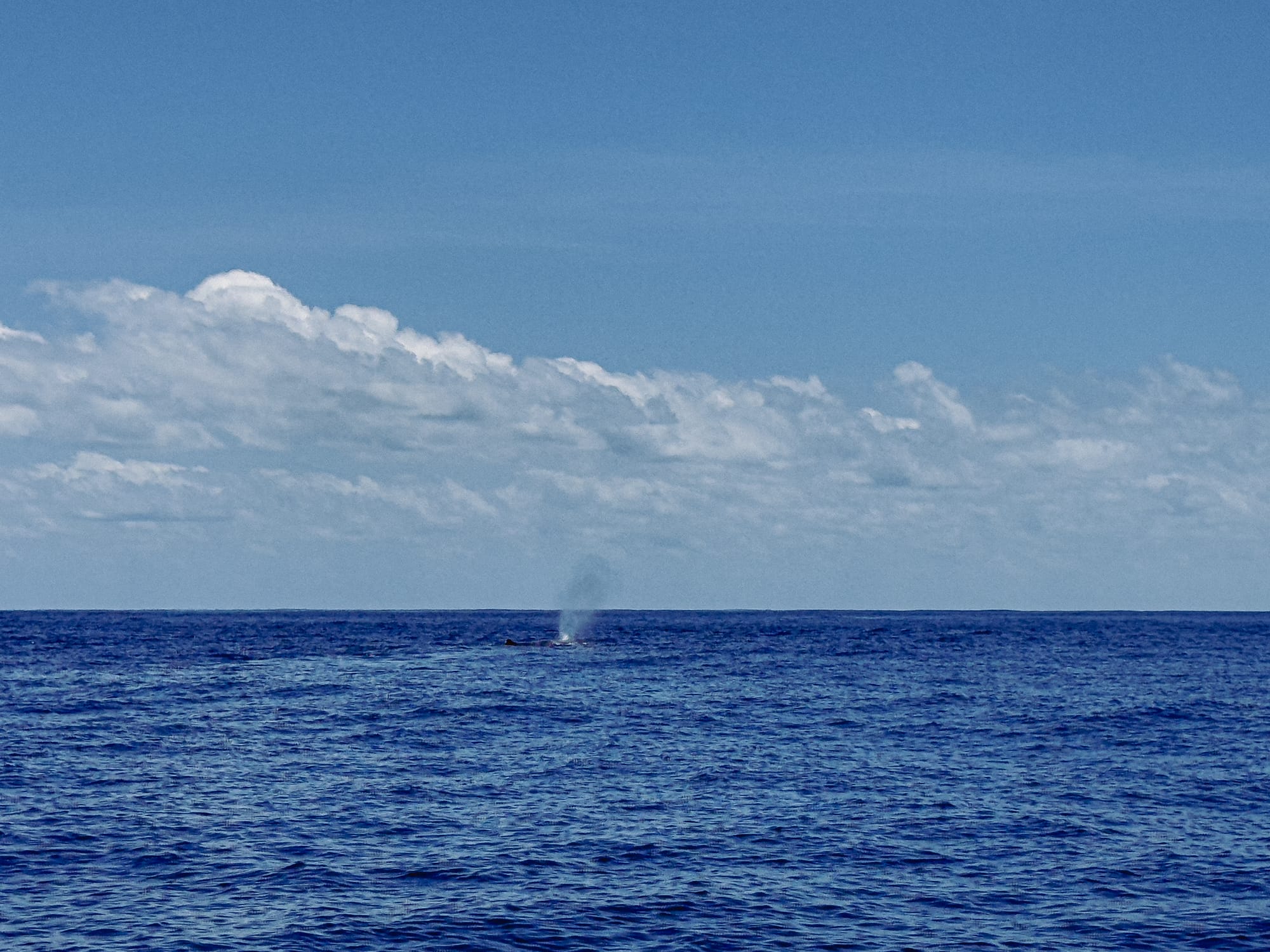
And when a whale does appear, even partially, it feels enormous. Not just in size, but in presence. You realize how small you are, how temporary.
The ethics of observation
With any wildlife encounter, there’s an ethical question: should we be there at all? The tour operator we chose takes this seriously. Instead of caging animals or bringing them to an artificial enclosure, the tours go out into their environment, observing them with respect and distance.
Unlike aquariums or marine parks, these animals aren’t in captivity. You’re entering their world on their terms. The best tours frame this as a privilege, not a right. Your boat won’t chase or surround the animals. Instead, it will observe them from a safe and regulated distance, letting them come closer if they choose.
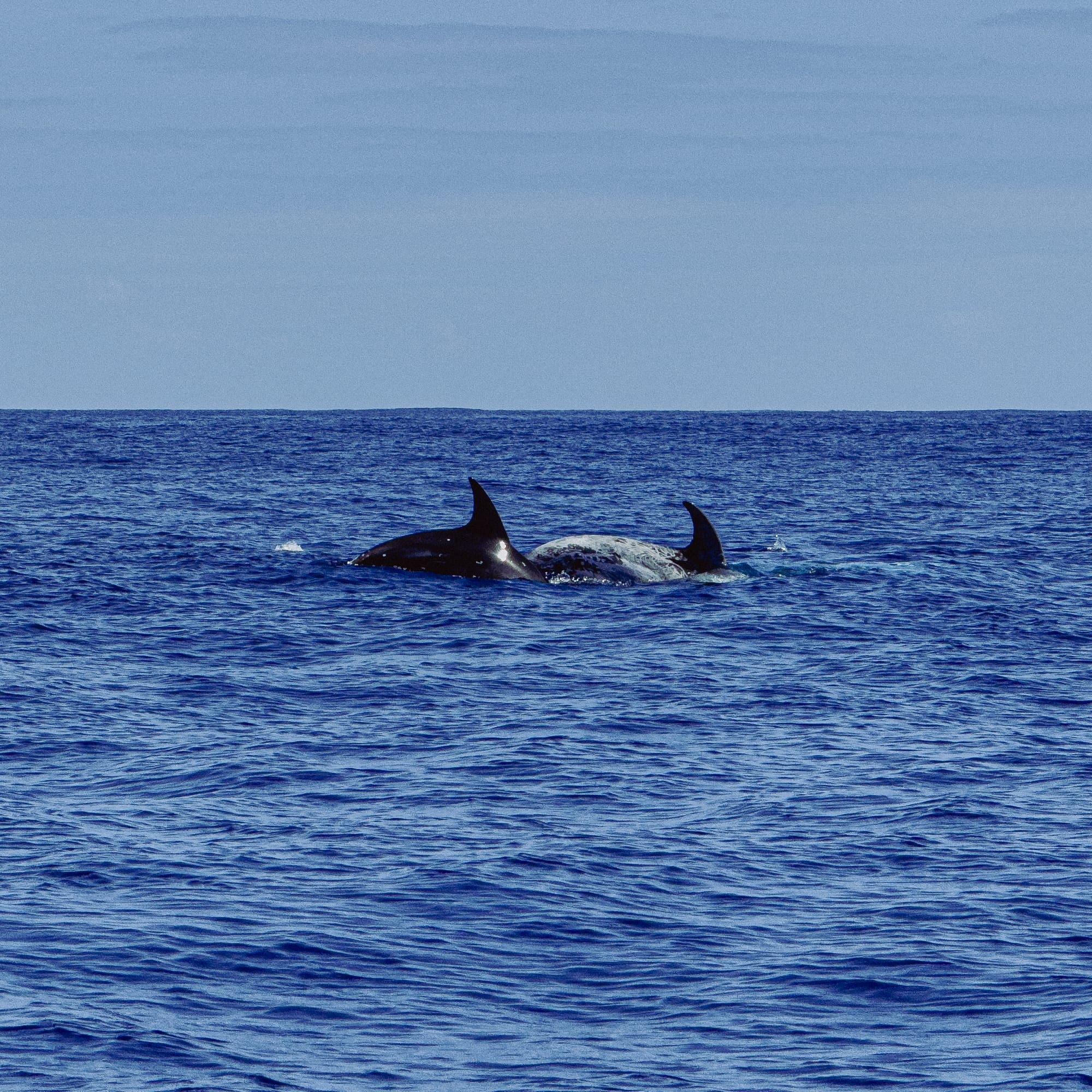
Guides follow strict protocols. Encounters are timed and monitored. The animals are wild, not performing. Some days you see more, some days less. There are no guarantees.
But this is the beauty of it. These are moments of genuine presence, not manufactured entertainment. The ocean remains the animals’ domain. We’re just visitors.
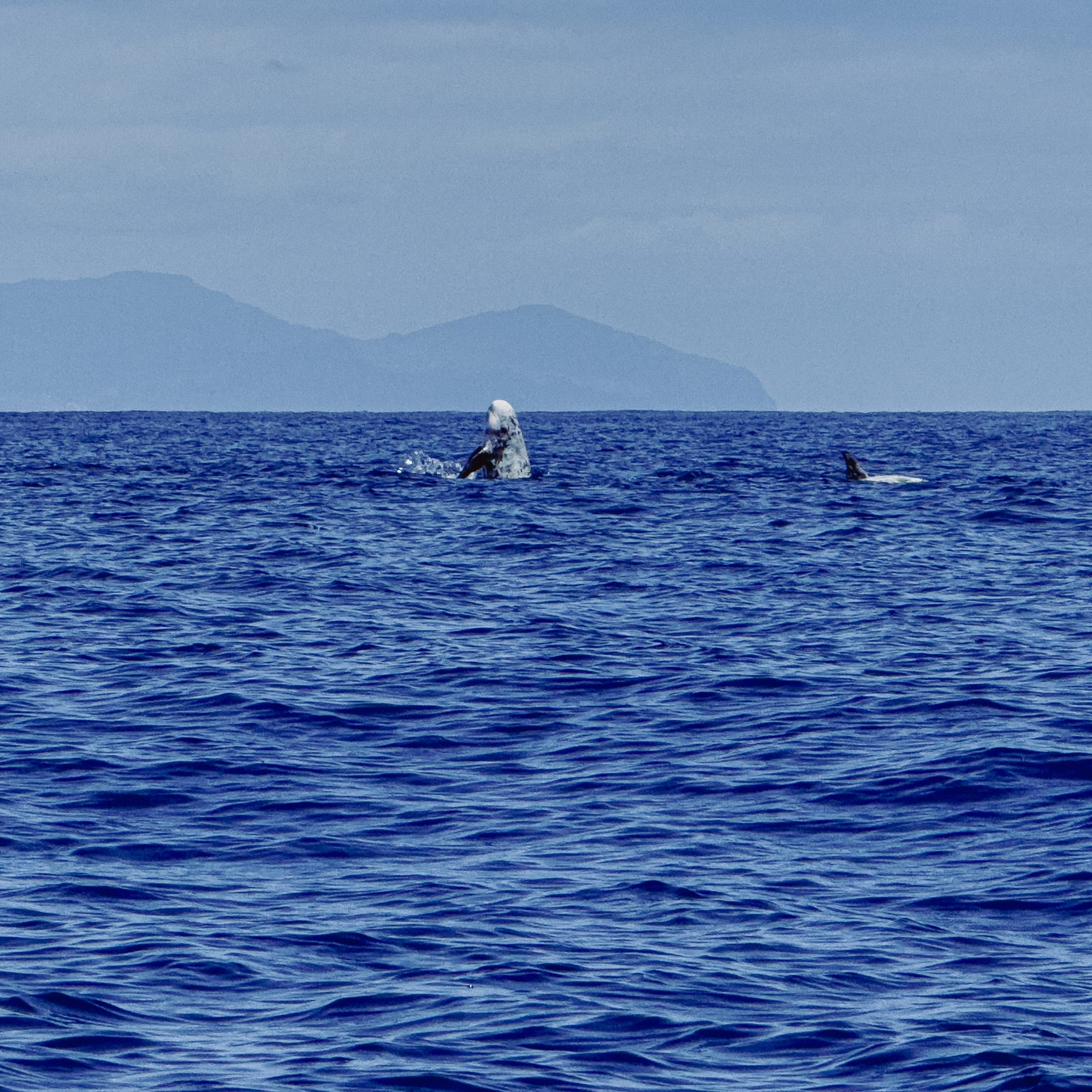
This is one of the most powerful things about the experience: these creatures are free. Entirely unconfined. To witness them in their element—feeding, socializing, migrating—is to witness wildness itself.
And the best operators are deeply aware of their impact. Many tours include marine biologists or guides trained in cetacean behavior. Some also participate in data collection or citizen science programs. You’re not just a passenger; you’re part of a broader ethic of encounter.
What if you see nothing?
Good question. Most tours have an ethical and economic workaround: if you don’t see either whales or dolphins, they’ll let you go again, free of charge. That means your ticket is a sort of promise—you will eventually see something, even if it takes more than one trip.
In our case, that wasn’t necessary. Within the first hour, we’d seen several species.
Tour tips
A few things we learned:
- Small boats are better for sightings. But only if you’re physically comfortable with them. The ride can be intense—especially in wind or swell.
- Bring layers. Even on warm days, the Atlantic gets cold. A windbreaker or fleece goes a long way. Futurismo can also give you a jacket.
- Photography is tricky. Long lenses can be helpful, but often it’s better to just enjoy the moment. The tour operators will usually share photos from the trip later.
- Stay alert. Wildlife can appear suddenly and vanish just as quickly. Put your phone down. Scan the water. Trust your eyes.
- Time of day matters. Mornings tend to be calmer on the water, but conditions change fast. Ask the guides for recommendations based on weather.
- Use sunscreen, but avoid sprays. They’re harmful to marine life. A reef-safe cream is better.
- Motion sickness meds help. Even if you don’t usually get seasick, it’s better to be safe—especially on the Zodiac.
- Trust the crew. They’re experts in reading ocean behavior. If they say to sit, hold on, or look left—do it.
What stayed with us
The water, the quiet, the horizon. The intimacy of being eye-level with a dolphin, the thrill of seeing a whale exhale, the sudden rush of movement just beneath the boat. There were long, empty stretches too—time to sit with salt on your skin and the sun on your face, watching the line between sea and sky.
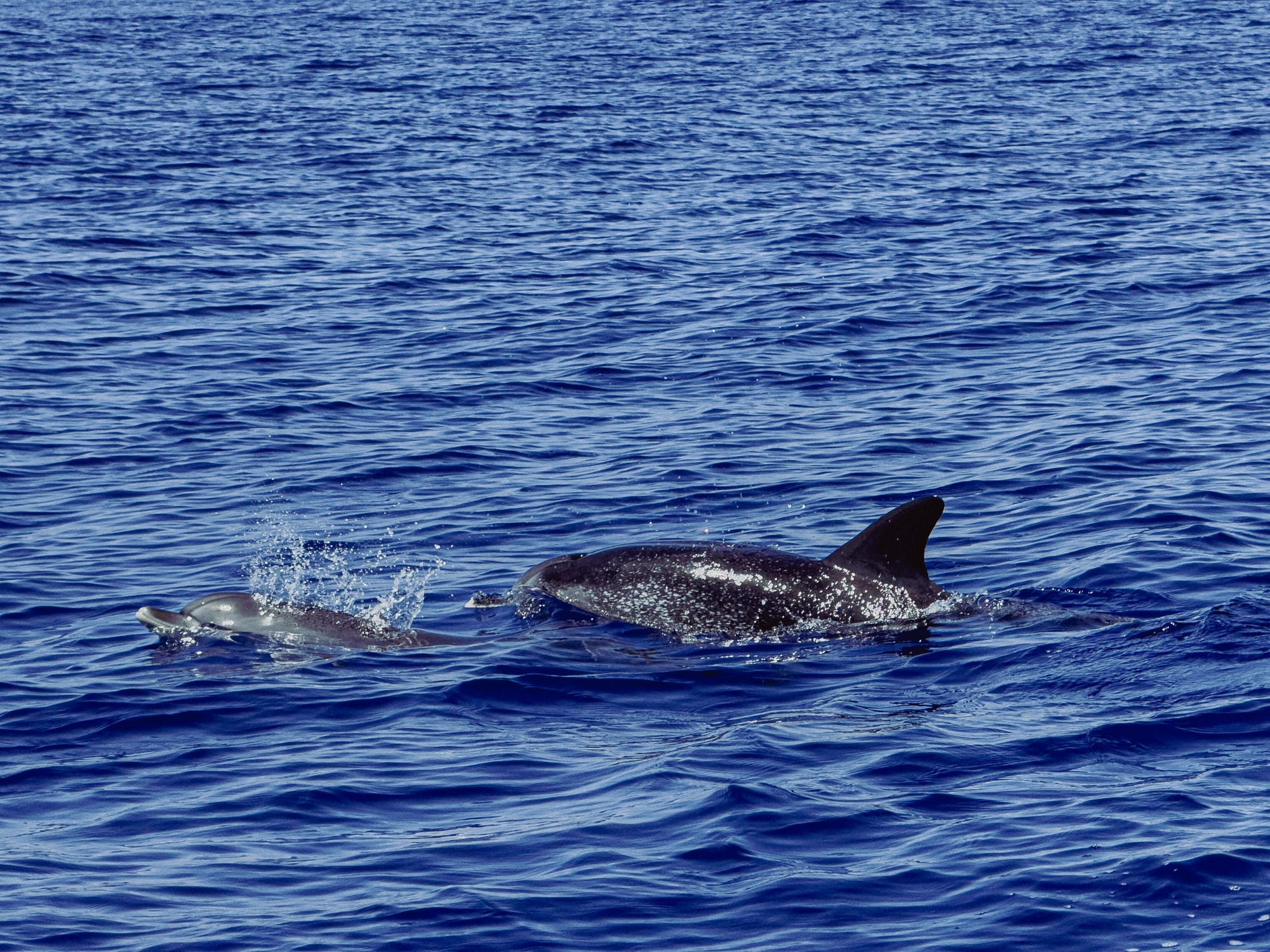
Interested in going on an adventure? We recommend this tour operated by Futurismo, where you can choose between a catamaran and Zodiac boat.
Bon voyage!






